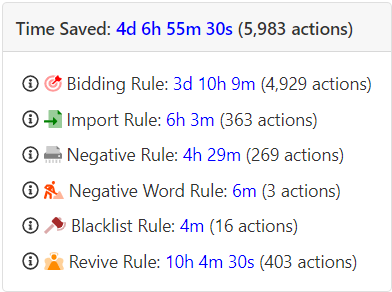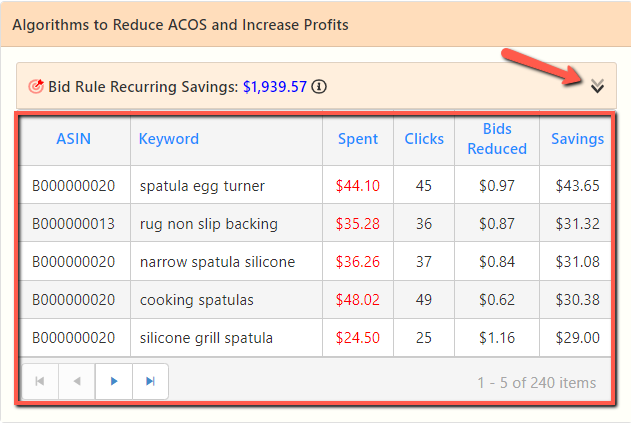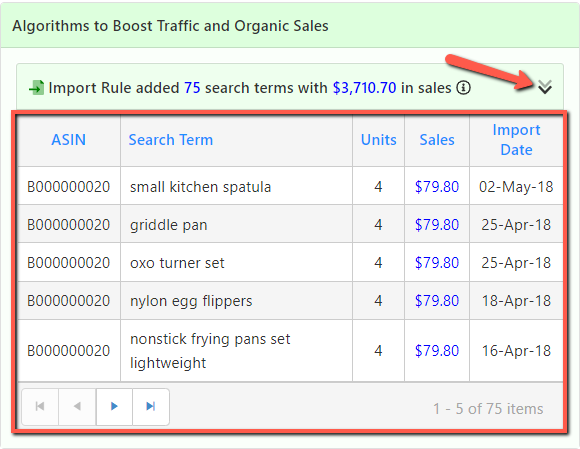- 24 Oct 2024
- 1 Minute to read
Measuring time and advertising dollars saved
- Updated on 24 Oct 2024
- 1 Minute to read
The automation overview page estimates the time and advertising dollars saved from each algorithm.
Navigation: Automation > Overview

Estimating time saved per action
The table below estimates the time it takes to perform an optimization action manually on Seller Central.
Algorithm | Time saved per action | Reason |
| Dayparting | 3 seconds | |
| Bidding | 1 minute | Stackable rules with different min/max bids and different formulas. |
| Import | 1 minute | Stackable rules aggregate search terms at different ads type. |
| Negative | 1 minute | Stackable rules aggregate search terms at different ads type. |
| Negative Word | 2 minutes | Split aggregated search terms across multiple ads into unique words. |
| Blacklist | 15 seconds | |
| Revive | 1.5 minutes | Stackable rules find keywords with no traffic and optimize based on past performance. |
| Default Bid | 15 seconds | |
| Status | 15 seconds | |
| Daily Budget | 15 seconds | Budget factors in the day of the week and multiple performance criteria. |
Estimating advertising dollars saved per action
"Algorithms to Reduce ACOS and Increase Profits" summarizes savings for each optimized ad.

Estimating recurring savings contributed by Bidding Rules
Imagine a keyword that had 100 clicks in the last 30 days.
If the keyword bid remains at $1.50, the estimated spending in the next 30 days is $150 ($1.50 * 100 clicks), assuming the number of clicks remains the same.
If the keyword bid reduces to $1.20, the estimated spending in the next 30 days is $120 ($1.20 * 100 clicks), assuming the number of clicks remains the same.
Reducing the bid represents an estimated $30 in recurring advertising dollars saved.
Scale Insights calculates estimated recurring savings using the same principle and assumptions.
In reality, lower keyword bids result in a lower number of clicks, incurring even lesser spending and netting even more advertising dollars saved.
"Advertising dollars saved" represents the reduced amount you pay for ads and can be considered as reducing unnecessary ad spending. It does not translate to profitability and does not factor in organic sales or ranking changes.
Estimating recurring savings contributed by Negative Rules, Negative Word Rules, and Status Rules
The computation to estimate savings by these 3 rules operates similarly to the bidding rule.
Imagine a search term, unique word, or ad group with 100 clicks in the last 30 days, with an average $1.50 cost per click.
In the next 30 days, the estimated spending is $150 ($1.50 * 100 clicks).
If the algorithms negate the search terms or pause the ad, it represents an estimated $150 in recurring advertising dollars saved.
Actions to drive sales
"Algorithms to Boost Traffic and Organic Sales" summarizes actions that drive sales.


